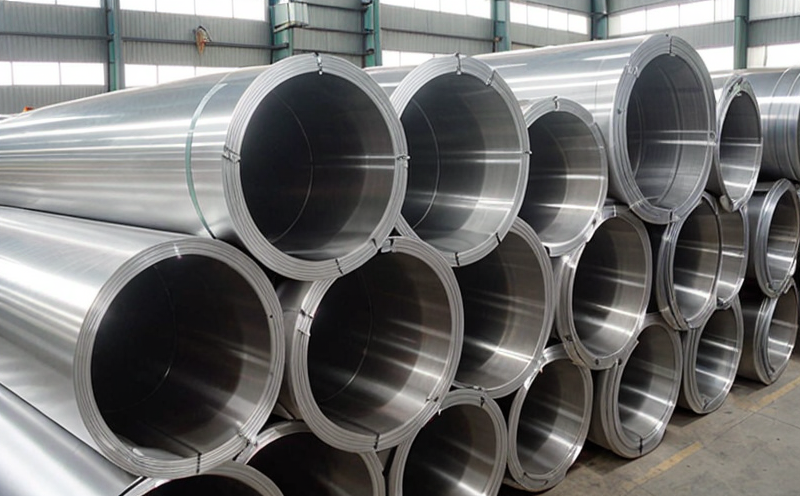ASTM G154 UV Resistance Testing of Ship Exterior Coatings
The ASTM G154 standard provides a comprehensive method for evaluating the resistance of materials to the effects of ultraviolet (UV) radiation. This testing is crucial in industries where materials are exposed to extreme environmental conditions, such as marine and ship equipment manufacturing. The primary objective of this service is to ensure that coatings used on ship exteriors can withstand long-term exposure to UV light without degrading significantly.
Ship exterior coatings play a critical role in protecting the vessel from corrosion, biofouling, and general wear and tear. These coatings are often exposed to harsh environmental conditions including salt spray, humidity, and UV radiation. The durability of these coatings directly impacts the lifespan and maintenance costs of the ship. By conducting ASTM G154 tests, we can validate that the chosen coating will perform reliably under operational conditions.
The test procedure outlined in ASTM G154 involves exposing coated specimens to a combination of artificial light sources designed to simulate solar radiation. The exposure is typically carried out using xenon arc lamps that emit UV-A and UV-B radiation. This method allows for controlled testing, ensuring accurate results that are representative of real-world conditions. Specimens are exposed in a chamber where the intensity and spectrum of the light can be precisely regulated.
The specimens used in this test are usually prepared from actual ship exterior coating samples or synthetic equivalents. Prior to exposure, the surfaces must be cleaned thoroughly and conditioned according to ASTM G154 specifications. Once prepared, the specimens are mounted on a suitable fixture within the testing chamber. The exposure duration is typically between 200 and 800 hours, depending on the desired level of UV radiation exposure.
During the test, temperature and relative humidity may also be controlled to simulate specific environmental conditions. After exposure, the specimens are evaluated for any signs of degradation such as color change, loss of adhesion, or physical breakdown. These assessments are critical in determining whether the coating can maintain its protective function over time.
The results of ASTM G154 testing provide valuable insights into the durability and reliability of ship exterior coatings. This information is essential for quality managers, compliance officers, R&D engineers, and procurement teams to make informed decisions about materials selection and product design. By adhering to this standard, manufacturers can ensure that their products meet or exceed industry expectations and regulatory requirements.
One key aspect of ASTM G154 testing is the ability to predict long-term performance under real-world conditions. This predictive capability is vital for marine and ship equipment manufacturers who need to guarantee the longevity of their products. The test results can also be used as a basis for comparing different coating options, helping to identify the most durable and cost-effective solutions.
Another important factor in ASTM G154 testing is the use of advanced instrumentation. Modern testing facilities employ sophisticated equipment capable of monitoring temperature, humidity, and radiation levels throughout the exposure period. This ensures that each test run adheres strictly to the standard's specifications, producing consistent and reliable results.
Why It Matters
The durability of ship exterior coatings is paramount for ensuring the structural integrity and operational efficiency of vessels. Environmental factors such as UV radiation can cause significant degradation over time, leading to premature failure of coatings if not properly tested and selected. ASTM G154 testing provides a standardized approach to evaluating these materials, ensuring that they meet rigorous performance criteria.
For quality managers and compliance officers, the results of this test are essential for maintaining regulatory compliance and upholding high standards of product quality. By demonstrating adherence to international standards like ISO 28073 and ASTM G154, companies can build trust with customers and stakeholders. This is particularly important in industries where safety and reliability are non-negotiable.
R&D engineers benefit from the insights gained through ASTM G154 testing as they develop new coatings or improve existing ones. The test data helps identify potential weaknesses in current formulations and provides a roadmap for innovation. For procurement teams, understanding these results allows them to select suppliers who consistently deliver high-quality materials, further enhancing overall product performance.
In summary, ASTM G154 UV resistance testing of ship exterior coatings is vital for ensuring the long-term integrity and operational efficiency of marine vessels. By providing reliable data on material durability under specific environmental conditions, this test supports informed decision-making across various roles within the industry.
Customer Impact and Satisfaction
The results of ASTM G154 UV resistance testing have a direct impact on customer satisfaction by ensuring that the coatings used in ship exteriors perform reliably over time. Satisfied customers can expect reduced maintenance costs, extended product lifecycles, and enhanced safety and performance.
- Customers benefit from knowing that their vessels are equipped with high-quality materials proven to withstand harsh environmental conditions.
- Regulatory compliance is assured, which is essential for maintaining a positive reputation in the industry.
The detailed reports provided by our laboratory enable customers to make informed decisions about material selection and product design. This transparency fosters trust between suppliers and clients, enhancing overall satisfaction levels.
Use Cases and Application Examples
- In shipbuilding: Ensuring that the selected coatings can withstand prolonged exposure to UV radiation during construction and operation.
- In maintenance: Verifying the durability of existing coatings after repainting or refitting, ensuring continued protection against environmental factors.
- In research & development: Providing data for new coating formulations aimed at improving resistance to UV degradation.
By leveraging ASTM G154 testing in these use cases and application examples, companies can ensure that their products meet or exceed industry expectations. This helps them maintain a competitive edge while delivering superior performance and reliability.





